Leipzig's Cultural Heritage Expedition
Embark on a captivating journey through Leipzig's rich history and vibrant culture on this free walking tour. Discover iconic landmarks and hidden gems.
Time
3 Hours
Stops
8 Places
Distance
3.0 km
St. Thomas Church (Thomaskirche)
Begin your journey in Leipzig at the St. Thomas Church, a significant historical landmark where Johann Sebastian Bach worked as a cantor.
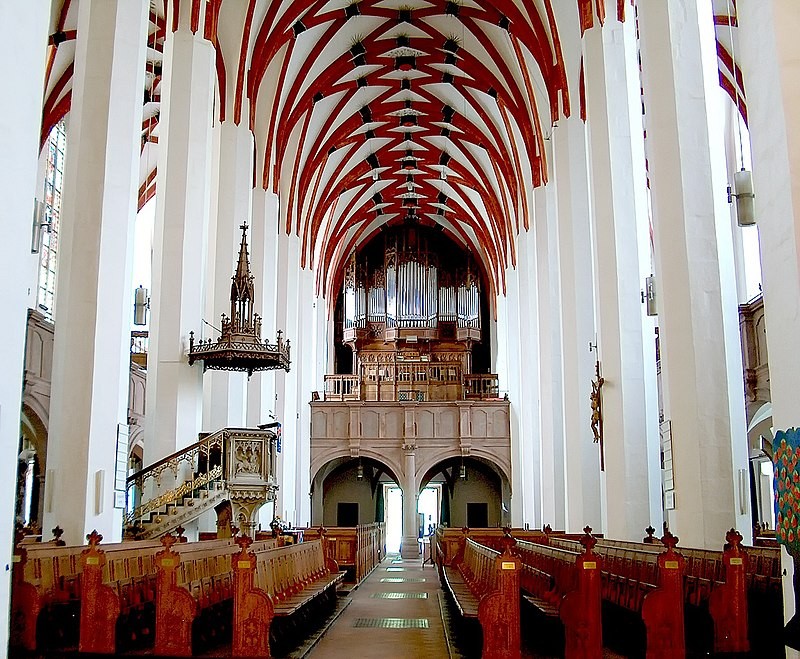
St. Thomas Church (Thomaskirche) (Source: Google Maps)
St. Thomas Church, or Thomaskirche, is not only a prominent landmark in Leipzig but also a site of profound musical heritage. Constructed in the 12th century, this Gothic church is renowned for its association with Johann Sebastian Bach, who served as its cantor from 1723 until his death in 1750. The church houses a beautiful organ, which Bach himself played, and it is also the final resting place of the composer. St. Thomas Church has been a center of Lutheran worship and music for centuries, making it a vital part of Leipzig's cultural fabric. Its stunning architecture features intricate stained glass windows and a striking wooden ceiling, attracting visitors and music lovers from around the globe.
Leipzig Market Square (Marktplatz)
A short walk from the church, the Leipzig Market Square is a vibrant spot that has been the heart of the city for centuries.
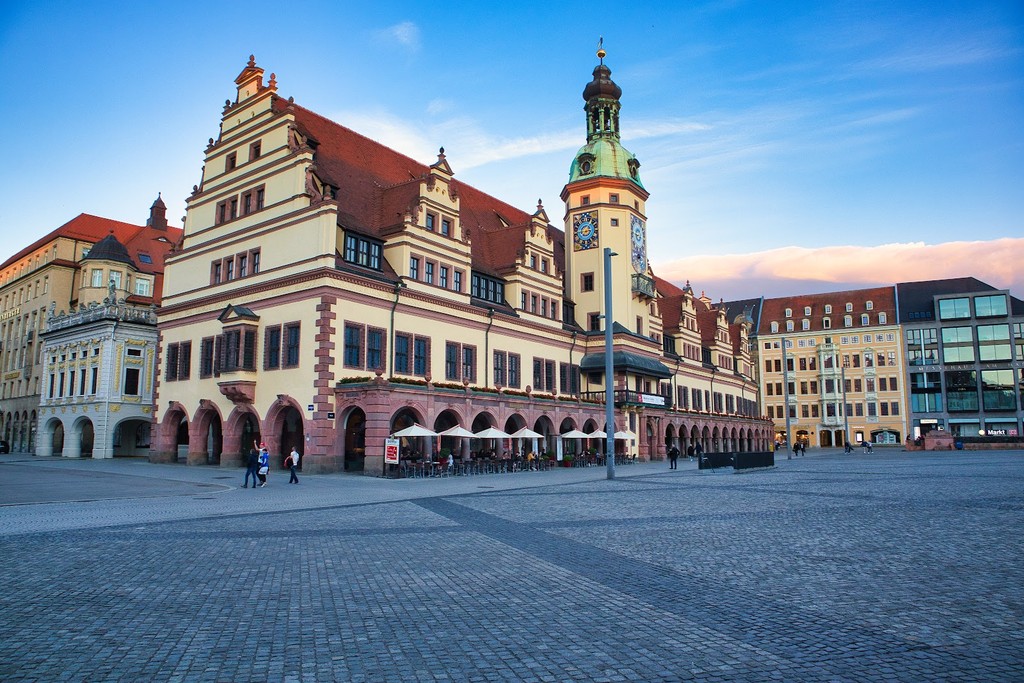
Leipzig Market Square (Marktplatz) (Source: Google Maps)
The Leipzig Market Square, or Marktplatz, has been the vibrant heart of the city since the Middle Ages. This bustling square is surrounded by historic buildings and serves as a hub for local markets, festivals, and events. Its significance lies not just in its architectural beauty but also in its role in Leipzig's trade history. Market Square was a crucial center for commerce, where merchants would gather to buy and sell goods. The square is flanked by notable structures, including the Old Town Hall and the Merchants' Hall, showcasing Renaissance and Baroque architecture. Today, it remains a lively space where locals and tourists alike enjoy the atmosphere, making it a must-visit location in Leipzig.
Old Town Hall (Altes Rathaus)
Located on the Market Square, this Renaissance building is one of the most important cultural monuments in Leipzig.
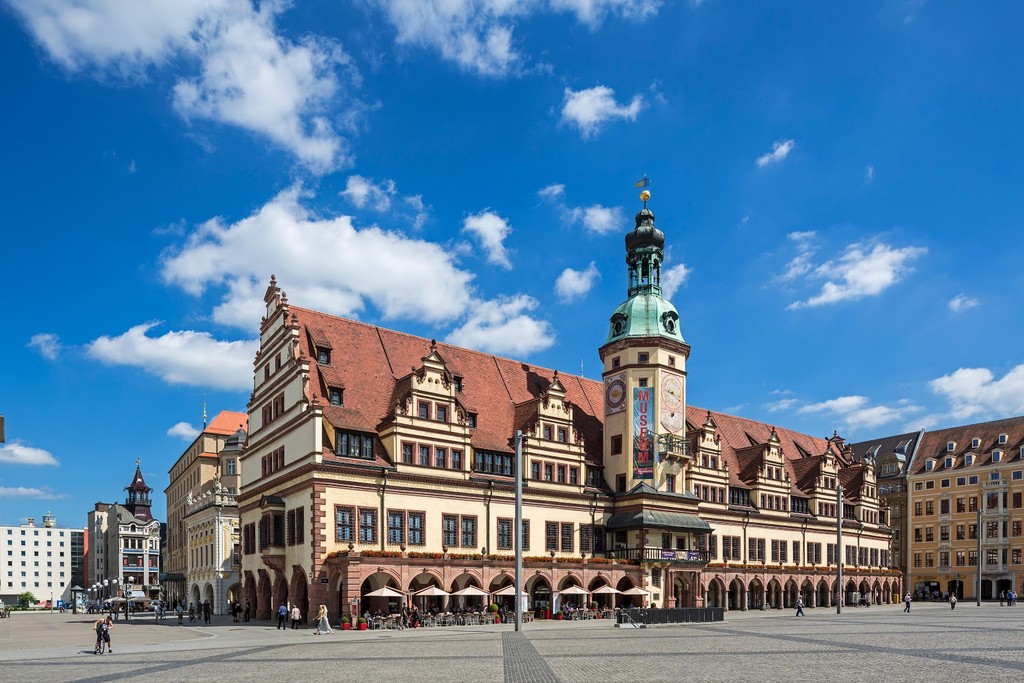
Old Town Hall (Altes Rathaus) (Source: Google Maps)
The Old Town Hall, or Altes Rathaus, is one of Leipzig's most important cultural monuments, showcasing exquisite Renaissance architecture. Built in the 1550s, it served as the seat of the city council for centuries and played a crucial role in Leipzig's political and social life. The building is adorned with intricate facades and a striking tower, which is a landmark of the city's skyline. Inside, the Old Town Hall features a museum that documents the history of Leipzig, including its role in trade fairs and civic governance. The building's grand halls and chambers have hosted numerous significant events, making it a symbol of Leipzig's rich heritage and a testament to its historical importance.
St. Nicholas Church (Nikolaikirche)
Just a few minutes away, visit the St. Nicholas Church, known for its role in the peaceful protests that led to the fall of the Berlin Wall.
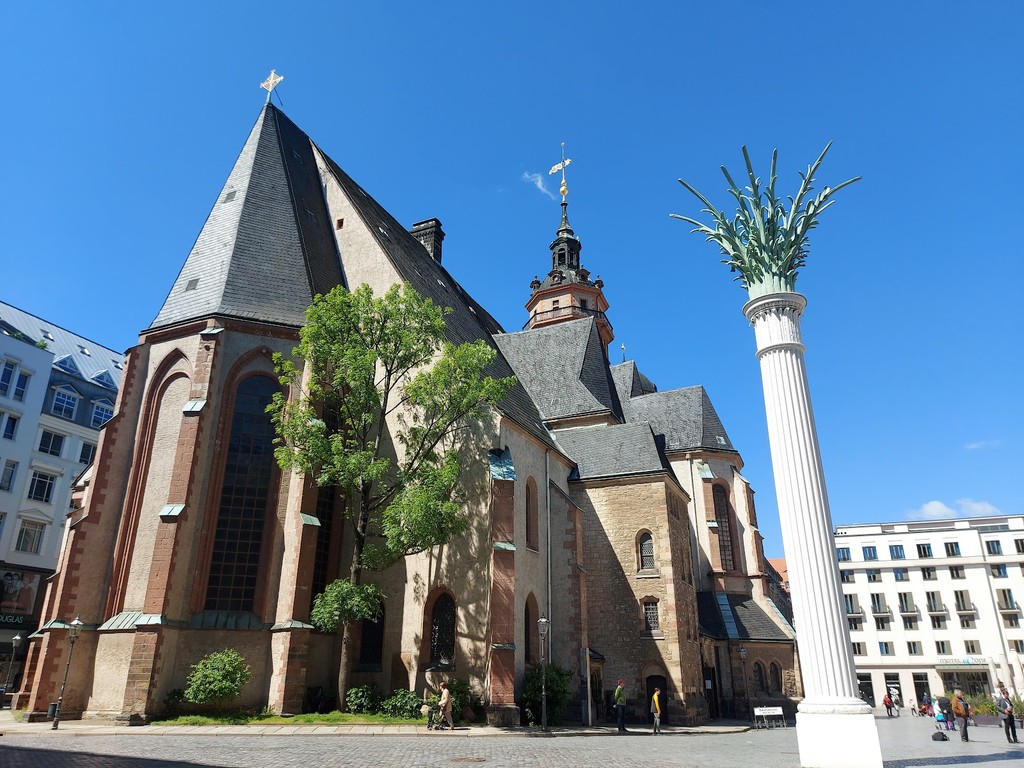
St. Nicholas Church (Nikolaikirche) (Source: Google Maps)
St. Nicholas Church, or Nikolaikirche, is a landmark of both architectural beauty and historical significance in Leipzig. Completed in the 15th century, this church is known for its striking Baroque tower and stunning interior. However, its most notable role came in the late 20th century when it became a focal point for the peaceful protests against the East German government that eventually led to the fall of the Berlin Wall in 1989. The church's congregation played a vital role in these demonstrations, symbolizing the fight for freedom and democracy. Today, St. Nicholas Church serves as a place of worship and reflection, drawing visitors interested in its history and its contributions to the peaceful revolution.
Leipzig University
Near Augustusplatz, explore Leipzig University, one of the world's oldest universities with a rich academic history.
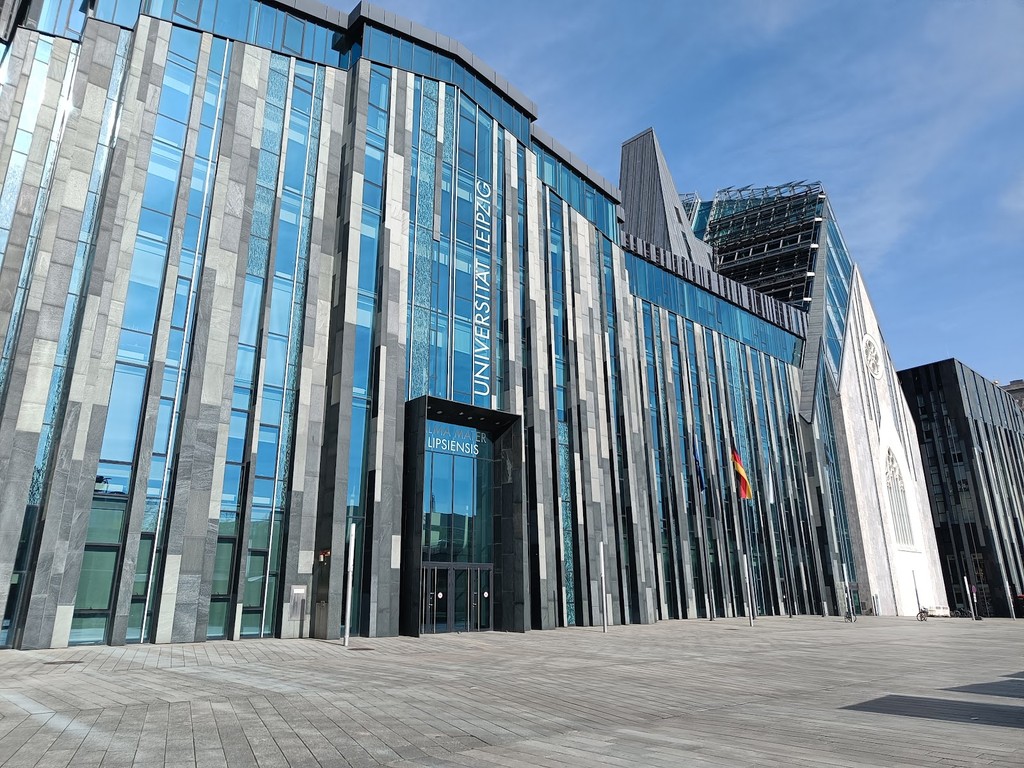
Leipzig University (Source: Google Maps)
Leipzig University, founded in 1409, is one of the oldest universities in the world and has played a significant role in shaping education and culture in Germany. Renowned for its academic excellence, the university has produced numerous influential thinkers, scientists, and Nobel laureates. Its campus features a blend of historic and modern architecture, with notable buildings such as the main university library and the auditorium. The university is also known for its strong emphasis on research and innovation, contributing to various fields including the humanities, social sciences, and natural sciences. Visitors can explore the university's rich history and its impact on Leipzig's intellectual landscape, making it a key stop on any cultural tour.
Augustusplatz
Continue your journey to Augustusplatz, one of the largest city squares in Germany, surrounded by significant cultural institutions.
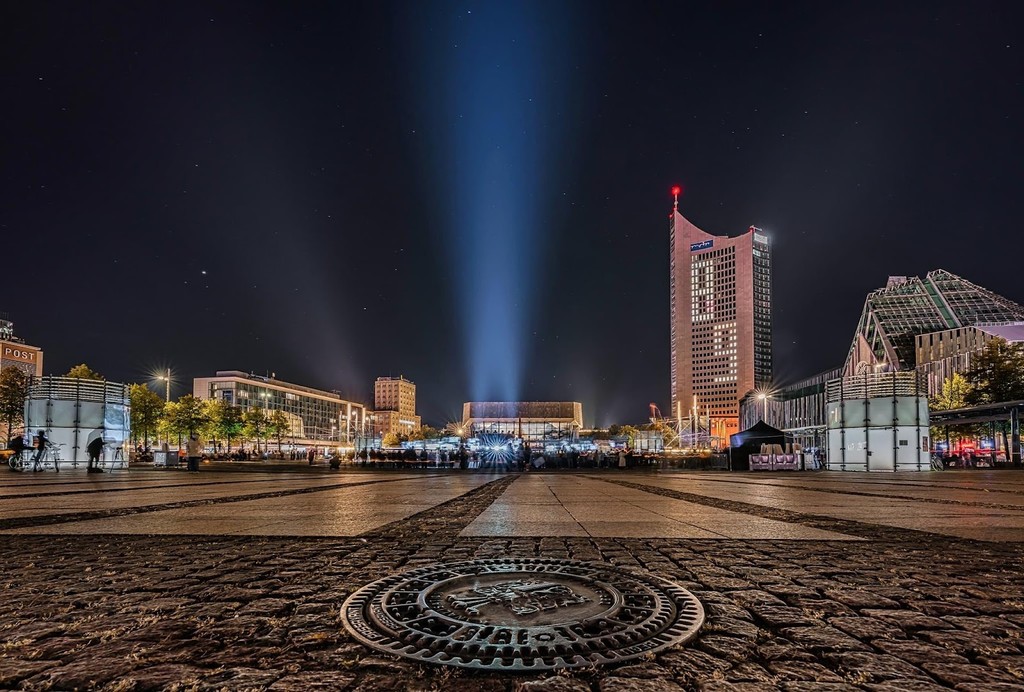
Augustusplatz (Source: Google Maps)
Augustusplatz is one of the largest and most significant city squares in Germany, located in the heart of Leipzig. This expansive square is surrounded by important cultural institutions, including the Gewandhaus concert hall and the Opera House. Augustusplatz has a rich history, originally serving as the site of a marketplace and later transforming into a public square. The square is known for its impressive architecture and is a popular gathering place for events, festivals, and demonstrations. Its central location makes it a vibrant hub of activity, where locals and tourists can enjoy the lively atmosphere. Augustusplatz is not only a focal point of Leipzig's cultural life but also a testament to the city's evolution over the centuries.
Grassi Museum
A short walk from the university, the Grassi Museum offers insights into applied arts, ethnology, and musical instruments.
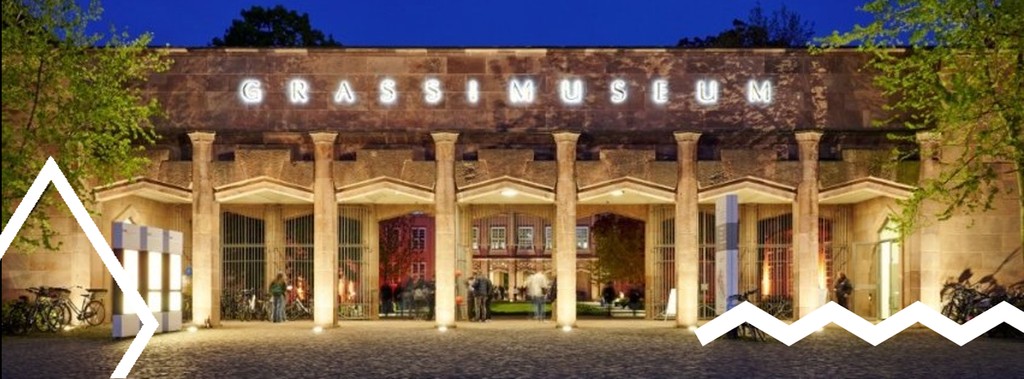
Grassi Museum (Source: Google Maps)
The Grassi Museum, located near the university, is a premier institution dedicated to applied arts, ethnology, and musical instruments. Opened in 1929, the museum is housed in a stunning neoclassical building that itself is a work of art. The museum's extensive collections span various cultures and time periods, showcasing decorative arts, textiles, and historical artifacts. One of its highlights is the musical instrument collection, which features instruments from different eras and regions, providing insight into the evolution of music. The Grassi Museum also hosts temporary exhibitions and educational programs, making it a dynamic space for cultural exchange and learning. It is a vital part of Leipzig's cultural landscape and attracts visitors interested in the arts and history.
Leipzig Botanical Garden
Enjoy a leisurely stroll through the Leipzig Botanical Garden, a green oasis in the city and one of the oldest botanical gardens in the world.

Leipzig Botanical Garden (Source: Google Maps)
The Leipzig Botanical Garden is one of the oldest botanical gardens in the world, established in 1755. Spanning over 14 hectares, it is a green oasis in the city, showcasing a diverse collection of plants from various climates and regions. The garden features beautifully landscaped areas, including a rock garden, a tropical greenhouse, and a herb garden. It serves as a center for research and education, contributing to the study of botany and horticulture. The Leipzig Botanical Garden is home to numerous rare and endangered species, making it an important site for conservation efforts. Visitors can enjoy peaceful walks amidst the lush greenery, learn about plant diversity, and appreciate the garden's historical significance in the context of botanical research.

Your travels, your rules.
Create your own Free Walking Tours.
Set your preferences, distances and anything you want to do or see.
Completely free, no payment required.